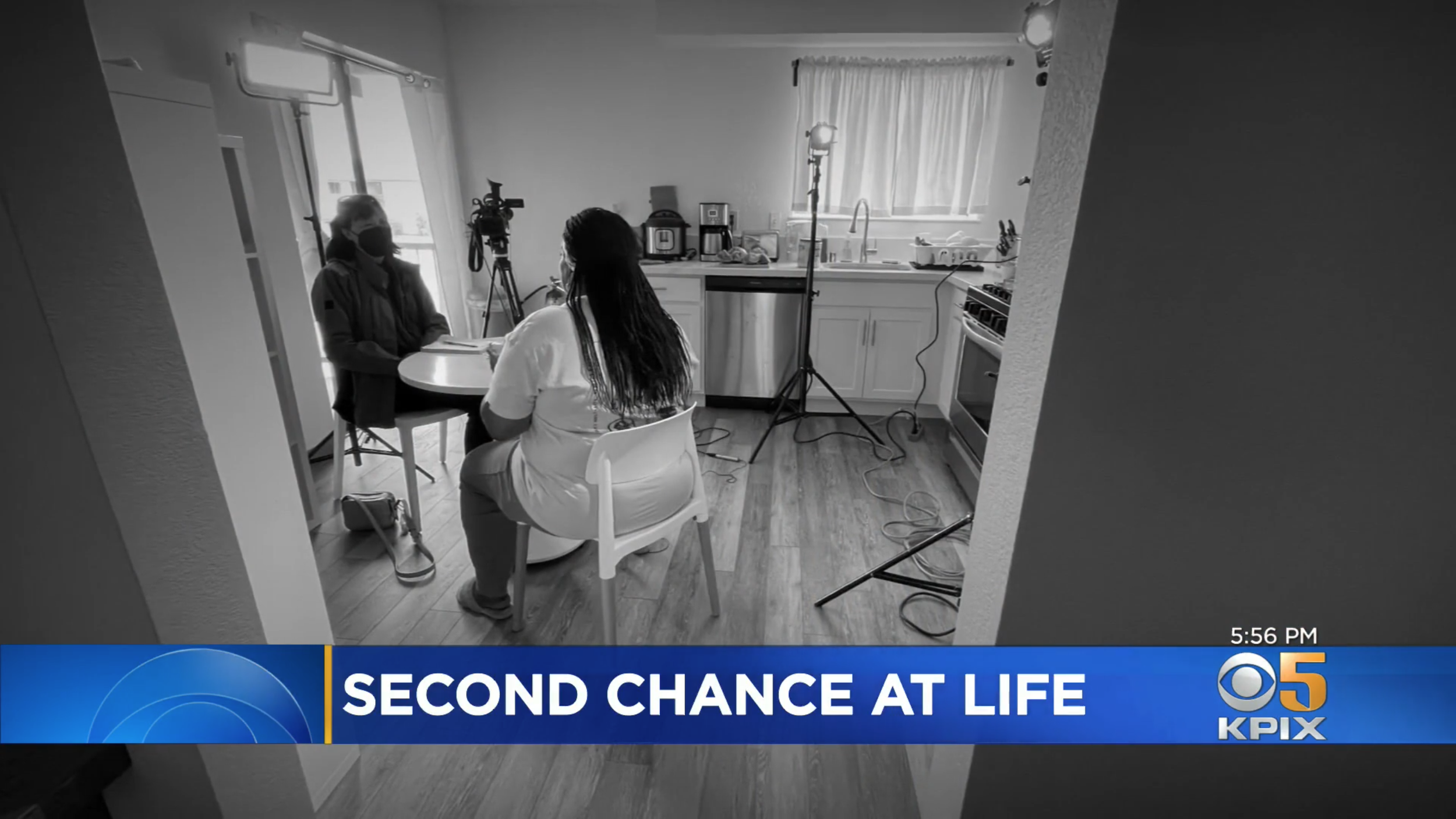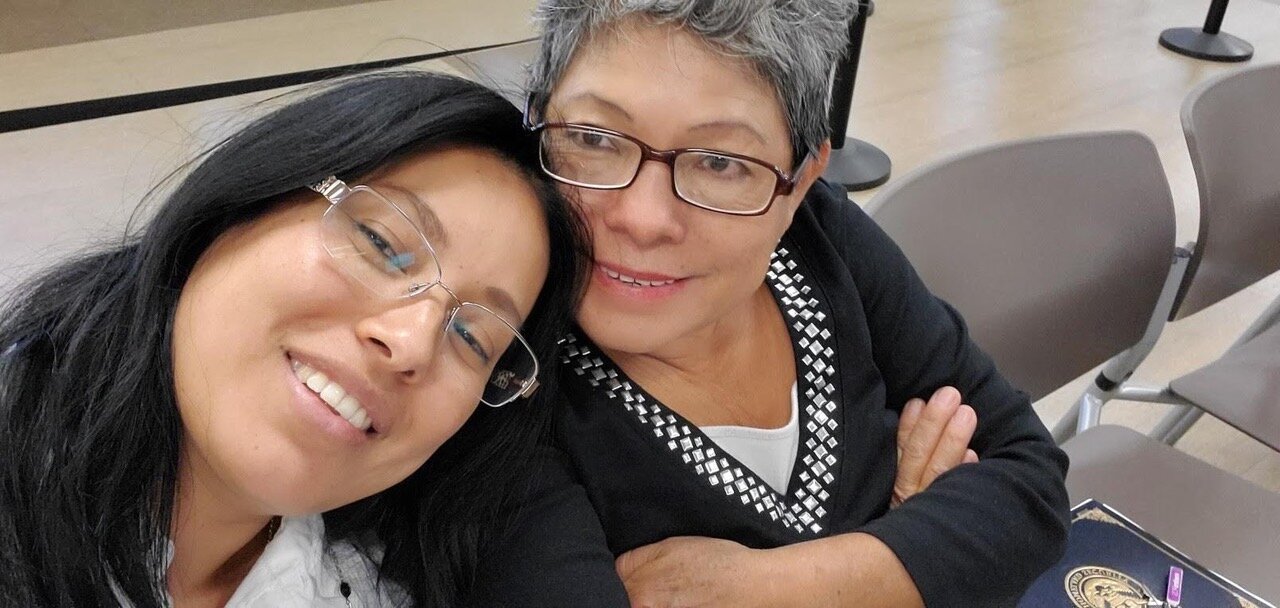Ya Ya and Susan Bustamante at Home Free
When Yadira “Ya Ya” Onefre looks in the mirror today, she sees someone she never imagined she could become — a successful mission-driven 38-year-old with a career advocating and providing care for the unhoused in San Francisco.
But behind her composed presence and warm smile is a painful past shaped by the trauma of abuse, tragedy, and ultimately, transformation. Yadira spent 13-and-a-half years behind bars in the California Institution for Women prison in Corona, CA and lost custody of her daughter permanently for a crime she did not commitment, but witnessed and failed to speak up.
“For years, I kept asking myself, ‘Why me?’’’ Yadira, now 38 says. “Why did I survive? Why did I let myself stay silent?”
To this day, she does not know the answer. But she does know that she is passionate about her role “helping others who don’t have a voice,” at a Five Keys shelter for the unhoused, Site 34, 685 Ellis Street, a former hotel, now transformed into a shelter for the unhoused.
After being released from prison, she spent months living at Home Free, a San Francisco-based transitional housing center on Treasure Island, and a trauma-informed reentry program for criminalized survivors of domestic violence and human trafficking. She recently moved into an apartment, the first in her life, just blocks from the shelter. She’s also enrolled in Five Keys charter schools’ program, studying for her GED. College is next on her bucket list.
Shortly afterwards, Yadira was hired at the shelter as an ambassador and today works full-time, from 7:30 a.m. to 6 p.m. as care coordinator at the Five Keys transitional housing shelter checking in on the guests, making sure they are safe, fed, and offering a listening ear to those who often feel the destitution, hopelessness, and despair that once haunted her night and day.
“So many of these people face such hopelessness fighting addiction, poverty, and all kinds of challenges,” says Yadira. “I try to meet them where they are. And when I say I can understand their pain, I do. When I was in prison, all I could think is ‘I’m a lifer. This is it.’ I never believed there would be any hope, but look at me now.”
The Journey from Darkness to Redemption: That Was Then
Yadira was just 17 when she met the man who would alter the course of her life. At first, he seemed protective, older, and experienced — but it wasn’t long before his charm dissolved into control, isolation, and abuse. By 18, she was a mom and a drug user. By the time she realized how deeply trapped she was, it felt too late to escape. Then came the worst day of her life — and the beginning of a years-long journey toward redemption.
At the center of the case that would make headlines and sentence her to 19 years to life in prison without parole, was a five-year-old girl’s — her boyfriend’s daughter — who died as a result of his severe abuse. She was considered an auxiliary because though Yadira did not inflict the injuries herself, she was arrested, and later convicted for failing to report them. The law held her responsible for what she didn’t do — report.
That Was Then, This is Now
Prison, strangely, became the place where she began to heal. It was there, behind bars, that she was befriended by another inmate — Susan Bustamante, who offered kindness without condition. That relationship planted the seed of hope.
“Susan gave me strength,” says Yadira. “She pulled me up. She told me my life wasn’t over," Yadira says. “And for the first time, I started to believe her.”
A Latina mother from East L.A., in many ways she saw Yadira’s pain, a mirror to her own — sentenced to life without the possibility of parole. Susan was convicted of helping her brother kill her husband. The court claimed it was for a $50,000 insurance payoff. But Susan tells a different story. She recounts years of beatings, threats, abuse, chokings, humiliation and anguish, in between intense good times and the birth of two children.
“I remember seeing Ya Ya for the first time, this baby lifer, and thinking she is a younger version of me,” says Susan, who was released in 2018 and today is a reentry coach for Home Free.
When Yadira’s sentence was commuted, Susan was waiting to drive her across the state to Home Free.
“Ya Ya is one of the most determined, kind-hearted persons who wants to do right in the world and who wants to reach back and help others who are suffering,” says Susan.
For Susan and Home Free, Yadira says she will be eternally grateful.
It was the Five Keys Home Free transitional housing program that gave her a place to start again. “They didn’t just give me a roof,” she says. “They gave me a sense of possibility.”
“I know what it’s like to be lost,” she says. “I also know what it’s like to find your way back.”
Today, she’s reunited with her family — something she once feared might never happen. There are still moments when the weight of the past knocks the wind out of her. But there are more moments now when she feels whole.
“I’ll always carry the sorrow of what happened,” Yadira says. “But I’m trying to honor that little child’s life by living mine differently — with purpose.”
Ya Ya and Susan Bustamante inside Home Free




























